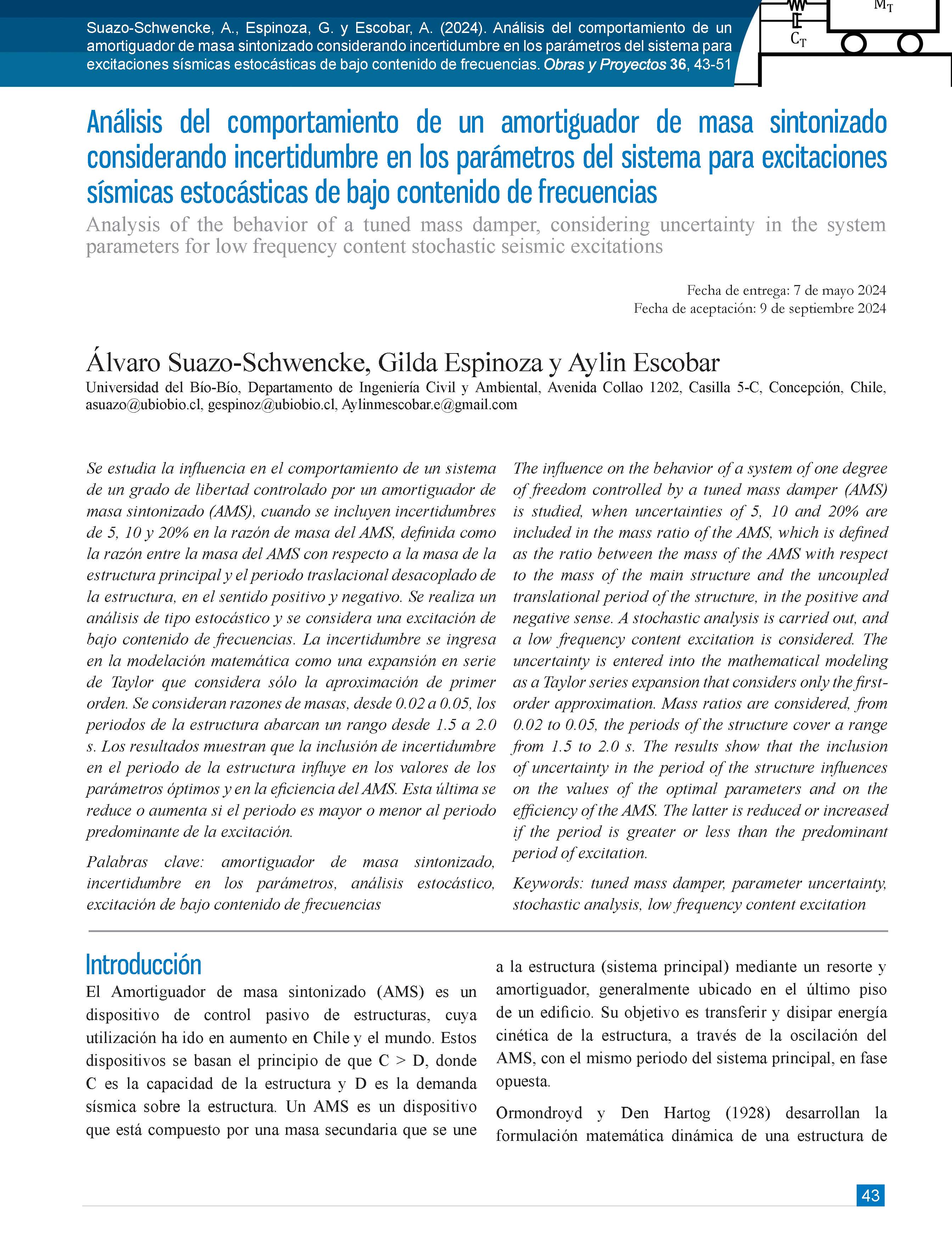Analysis of the behavior of a tuned mass damper, considering uncertainty in the system parameters for low frequency content stochastic seismic excitations
DOI:
https://doi.org/10.21703/0718-2813.2024.36.3004Keywords:
Tuned mass damper, Parameter uncertainty, Stochastic analysis, Low frequency content excitationAbstract
The influence on the behavior of a system of one degree of freedom controlled by a tuned mass damper (AMS) is studied, when uncertainties of 5, 10 and 20% are included in the mass ratio of the AMS, which is defined as the ratio between the mass of the AMS with respect to the mass of the main structure and the uncoupled translational period of the structure, in the positive and negative sense. A stochastic analysis is carried out, and a low frequency content excitation is considered. The uncertainty is entered into the mathematical modelling as a Taylor series expansion that considers only the firstorder approximation. Mass ratios are considered, from 0.02 to 0.05, the periods of the structure cover a range from 1.5 to 2.0 s. The results show that the inclusion of uncertainty in the period of the structure influences on the values of the optimal parameters and on the efficiency of the AMS. The latter is reduced or increased if the period is greater or less than the predominant period of excitation.
References
Bakre S.V. and Jangid R.S. (2007). Optimum parameters of tuned mass damper for damped main system. Structural Control & Health Monitoring 14(3), 448–470. doi.org/10.1002/stc.166
Crandall, S.H. and Mark, W.D. (1963). Random vibration in Mechanical Engineering. Academic Press, New York, US.
Den Hartog, J.P. (1934). Mechanical vibrations. McGraw-Hill, New York, US.
Espinoza, G., Quinteros, C., Gajardo, K., Suazo, A. y Quijada, S. (2021). Eficiencia de un amortiguador de columna de líquido sintonizado considerando una excitación sísmica de bajo contenido de frecuencias e incertidumbre. Obras y Proyectos 29, 54-68. doi.org/10.4067/S0718-28132021000100054
Espinoza, G., Rivas, S. y Suazo, A. (2020). Análisis de la eficiencia de un amortiguador combinado sintonizado con incertidumbre en los parámetros sometido a excitaciones sísmicas de bajo contenido de frecuencias. Obras y Proyectos 28, 68-77. doi.org/10.4067/S0718-28132020000200068
Ormondroyd, J. and J. P. Den Hartog (1928). The theory of dynamic vibration absorber. Transactions of the ASME 50(7): 9-22. doi.org/10.1115/1.4058553
Soto‐Brito, R. and Ruiz, S.E. (1999). Influence of ground motion intensity on the effectiveness of tuned mass dampers. Earthquake Engineering & Structural Dynamics 28(11):1255-1271. doi.org/10.1002/(SICI)1096-9845(199911)28:11<1255::AIDEQE865>3.0.CO;2-C

Downloads
Published
Issue
Section
License

This work is licensed under a Creative Commons Attribution-NonCommercial 4.0 International License.







